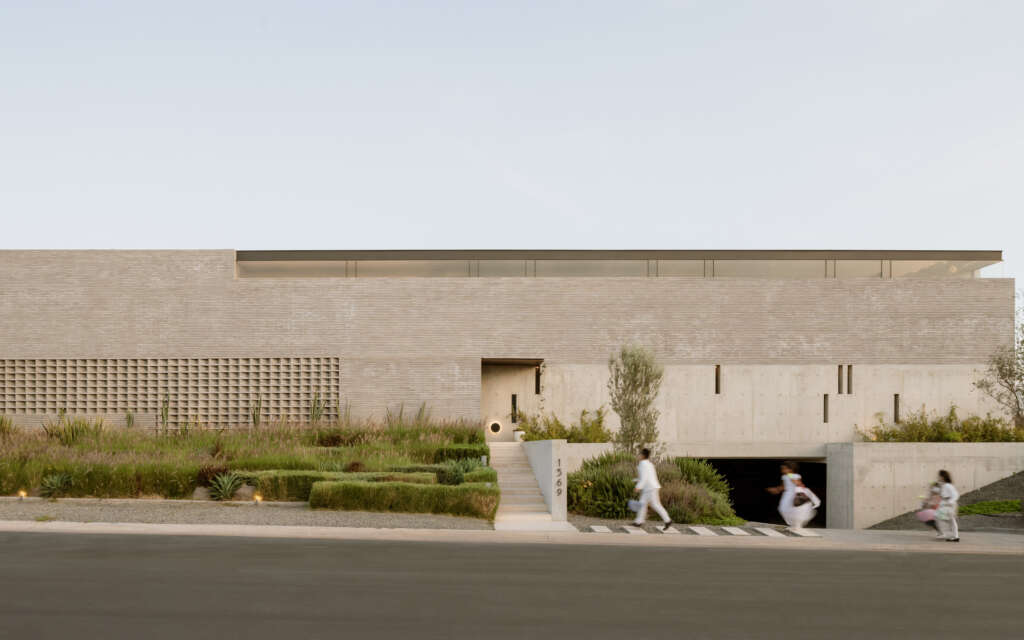
Casa Catedral
Architect: Laboratorio de Arquitectura
Location: Santiago de Querétaro, Mexico
Type: Residential
Year: 2024
Images: Ariadna Polo
The following description is courtesy of the architects. Casa Catedral is a project that prioritizes the honesty of materiality, using specially crafted blocks and concrete without additional cladding to achieve both economic efficiency and a dignified aging process. The layout of the residence follows a linear axis, consisting of four main volumes and a connector. These volumes, delimited by load-bearing walls and lattices, effectively separate public and private areas, ensuring a balanced scale and maintaining the privacy of each space. In addition, a careful south-east orientation guarantees panoramic views from every corner of the house and promotes a seamless connection with the surrounding canyon landscape.
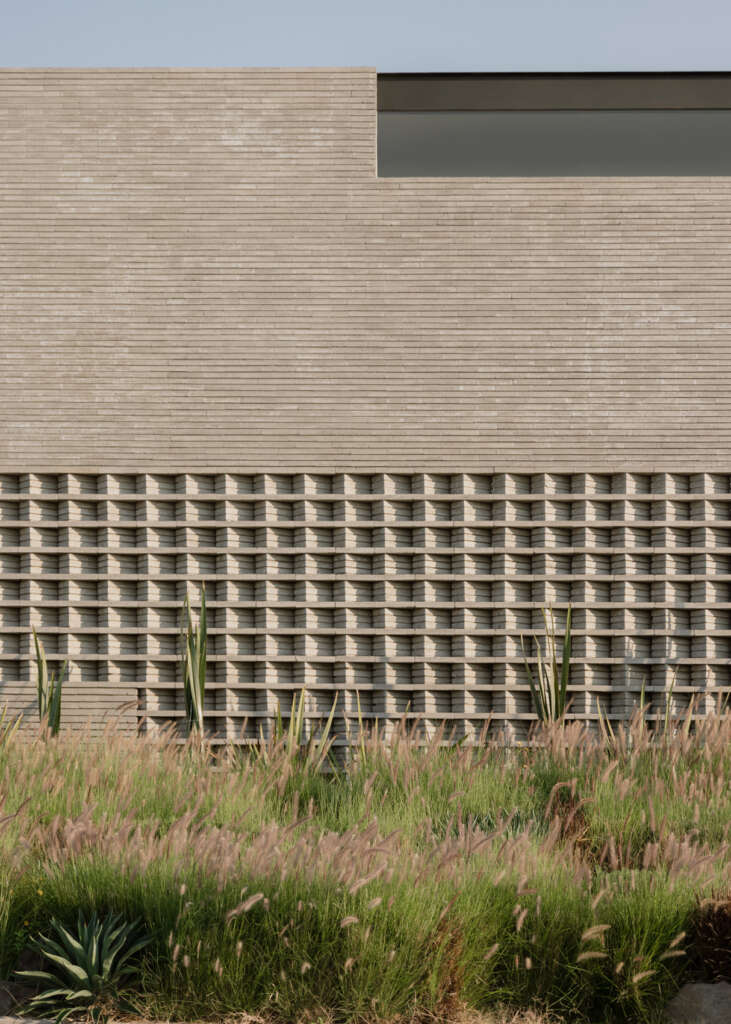
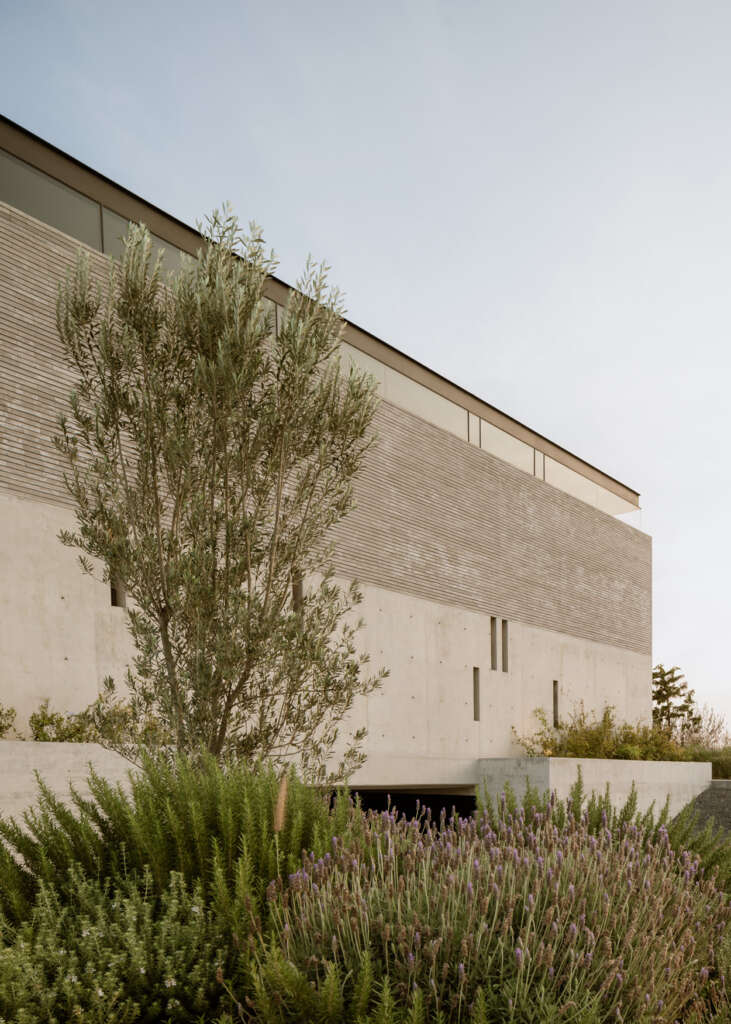

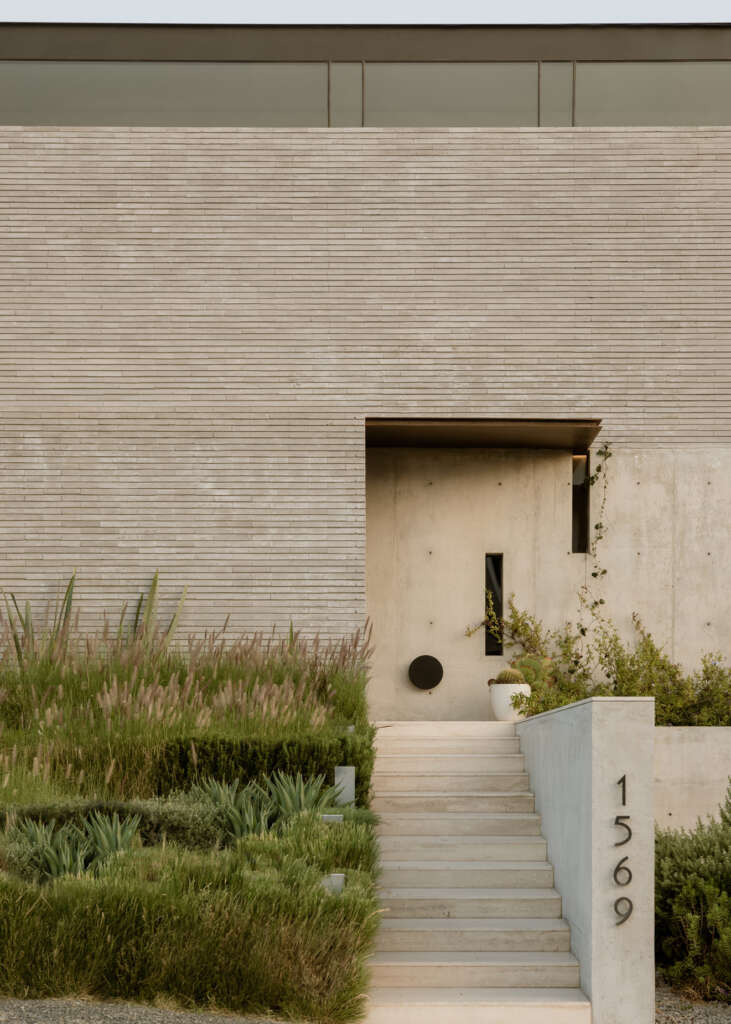
The connector volume serves as a central hub, housing the main entrance and staircase in a double-height space that warmly welcomes visitors and integrates different parts of the program in a fluid manner. This space stands out as a focal point, using materials such as tinted glass supported by tensioners to reflect the lush vegetation, creating a harmonious continuity with the natural environment.
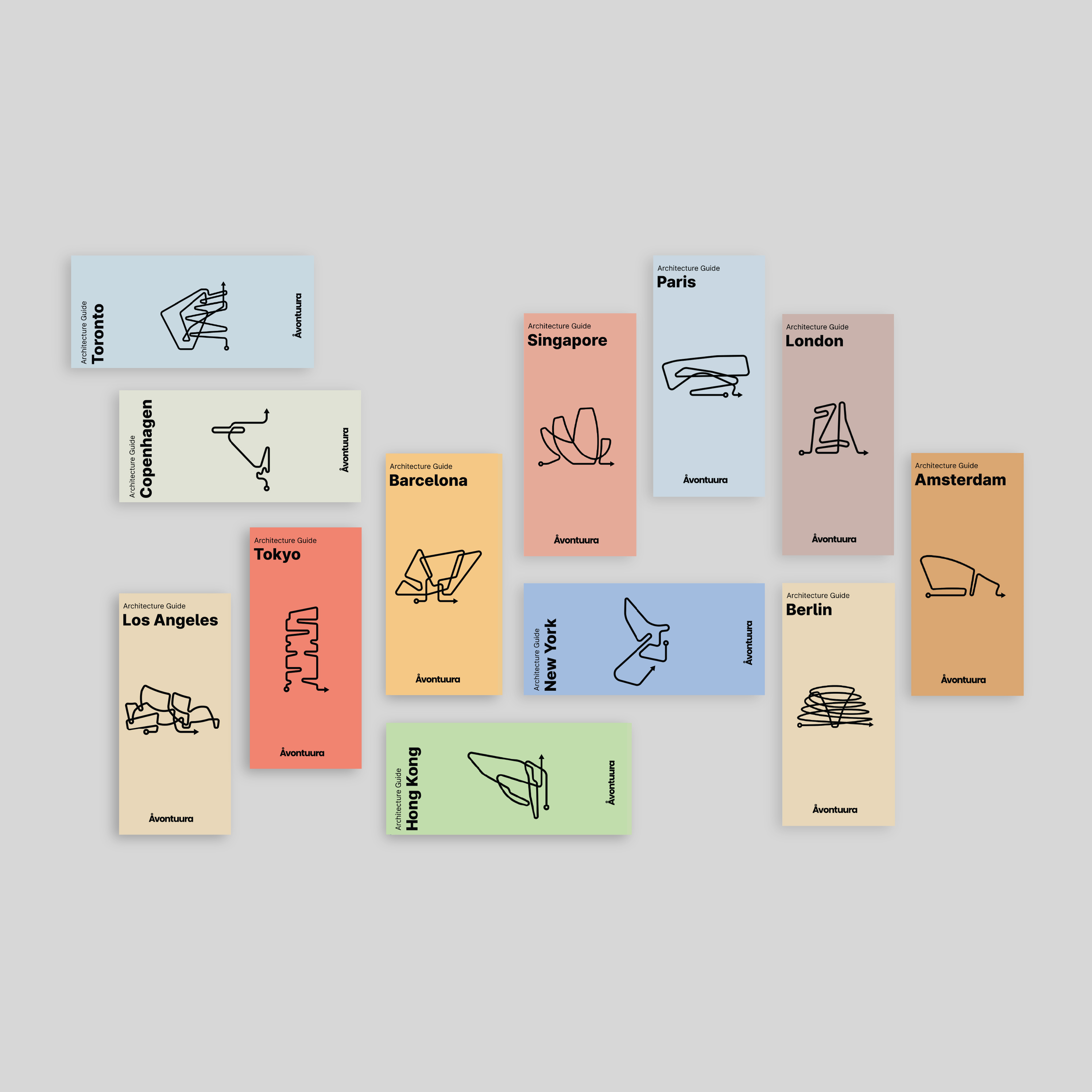
Introducing the Wandering Series:
Architecture Guides for Architecture Lovers
Explore all our guides at avontuura.com/shop
The larger primary volume on the ground floor includes common spaces such as the lowered living room and dining area, offering a dynamic user experience. This area is linked to the terrace and kitchen, creating an open layout that blends effortlessly with the garden and offers expansive views. Upstairs, the master bedroom and walk-in closet occupy this volume, culminating in a green area that enhances privacy. Meanwhile, the remaining three volumes are divided horizontally by greenery, providing privacy and eliminating the need for common walls. On the ground floor, these volumes house a study, guest rooms, and a gym, while the upper level houses secondary bedrooms connected by a double-height corridor that ends in a lattice. This design creates the illusion of floating ceilings and allows for abundant natural light.
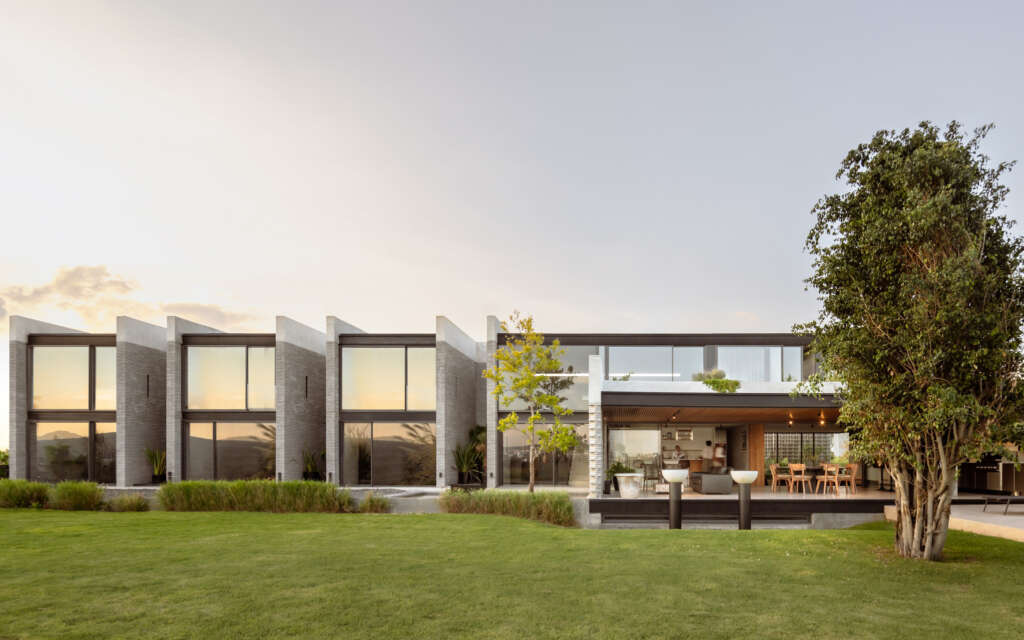
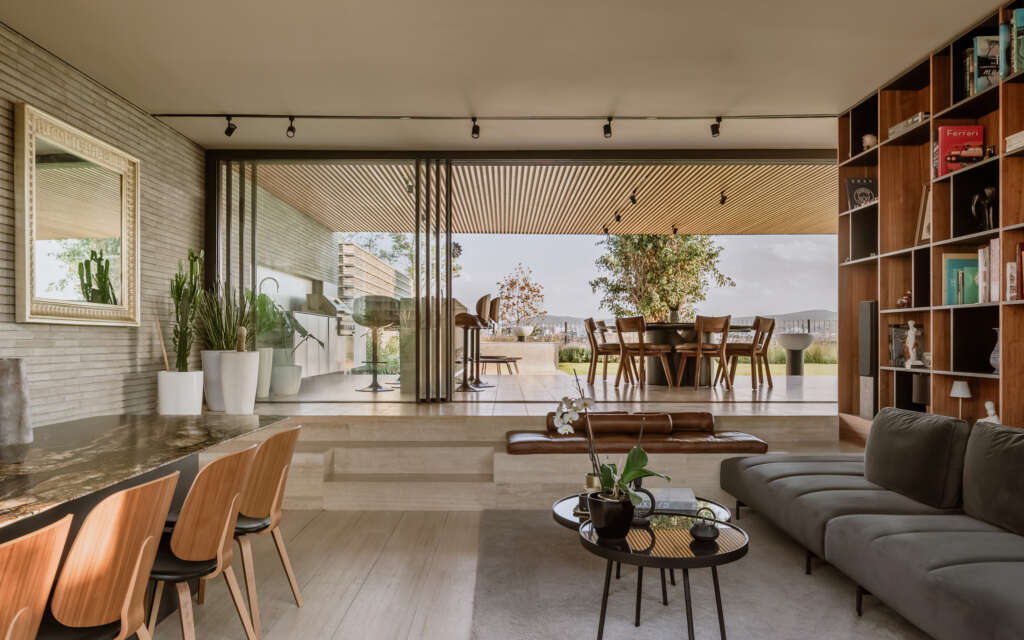
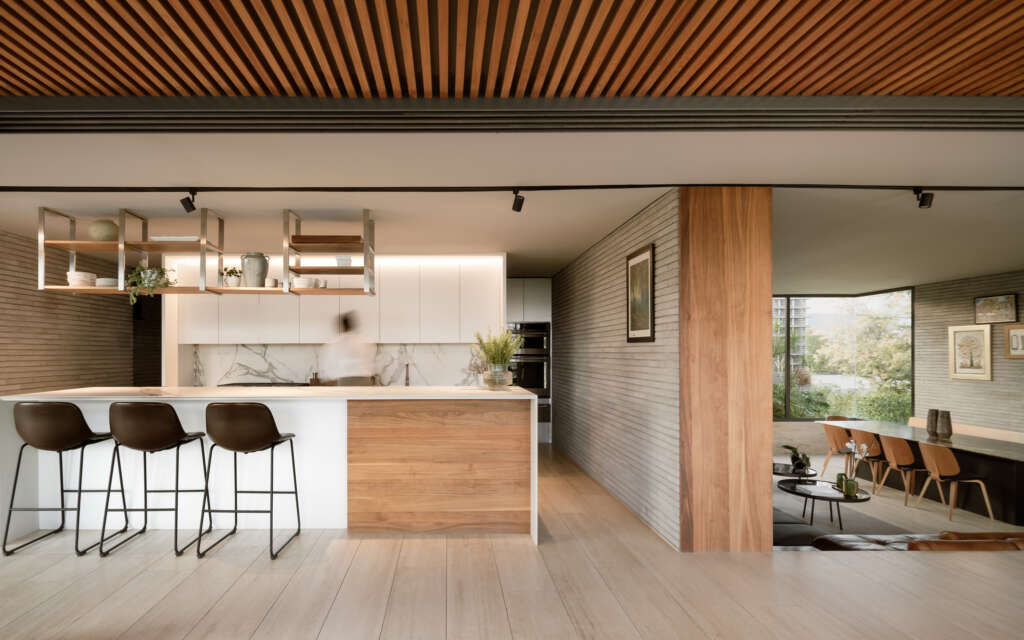
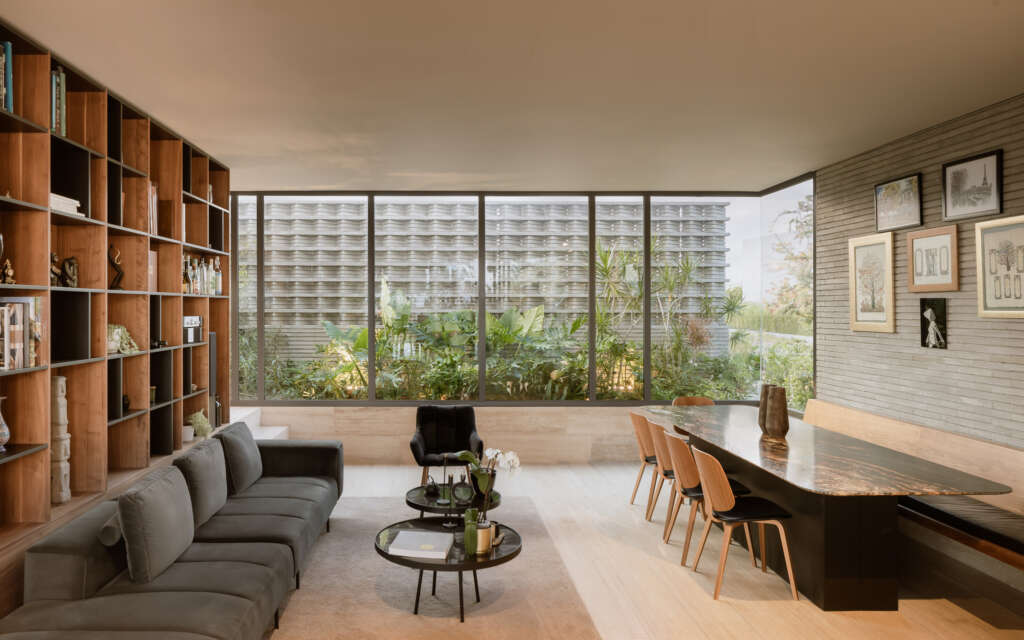
In addition to controlling scale and providing privacy, the strategic placement of structural block walls and grilles addresses solar mitigation and privacy concerns. This design approach not only enhances indoor quality of life, but also minimizes reliance on alternative ventilation systems, resulting in significant energy savings.
The interior facade of the house opens to the garden, fostering a seamless connection with nature, while the street-facing facade uses discreet openings and slits to ensure adequate natural light without compromising privacy.
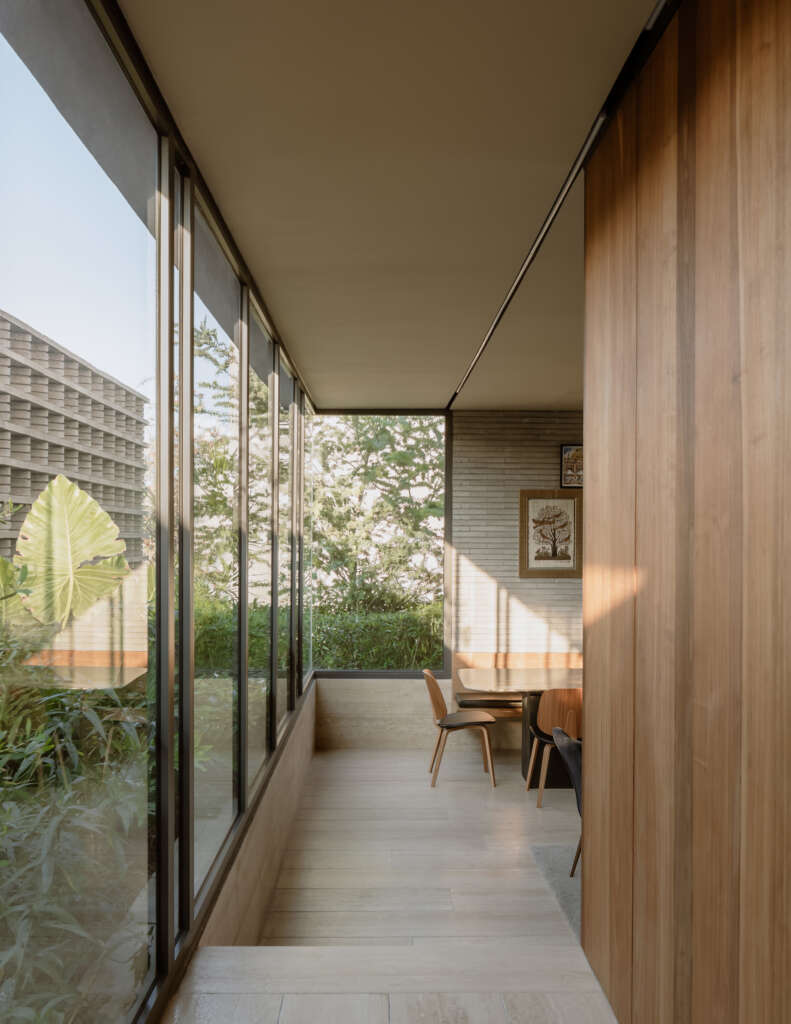
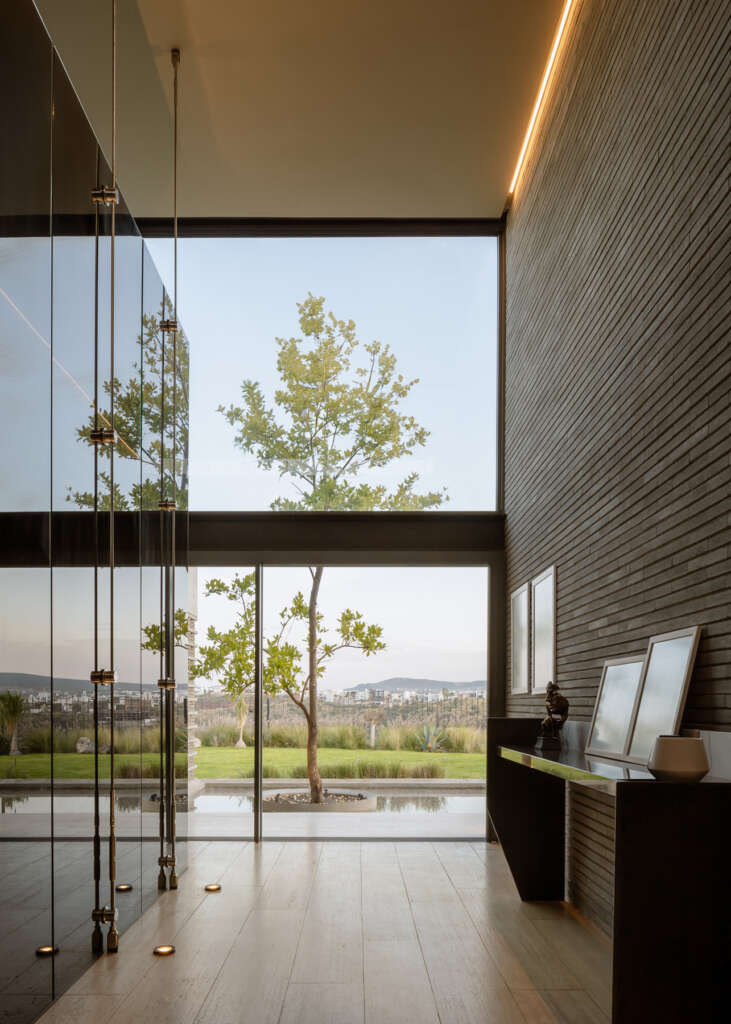
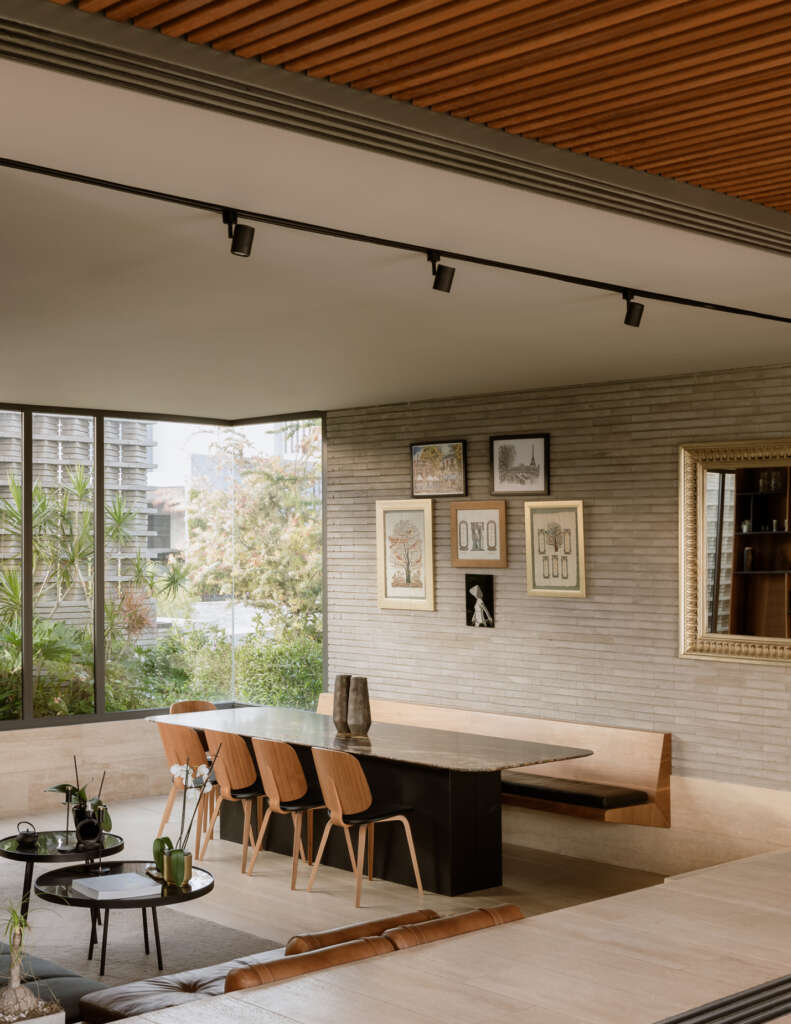
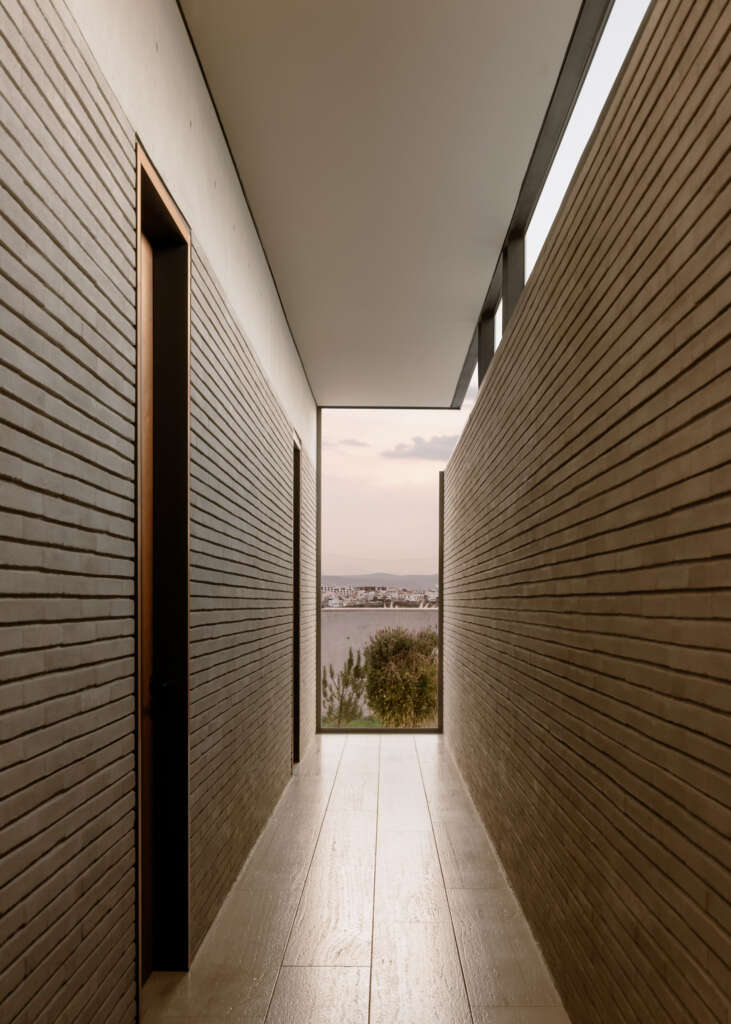
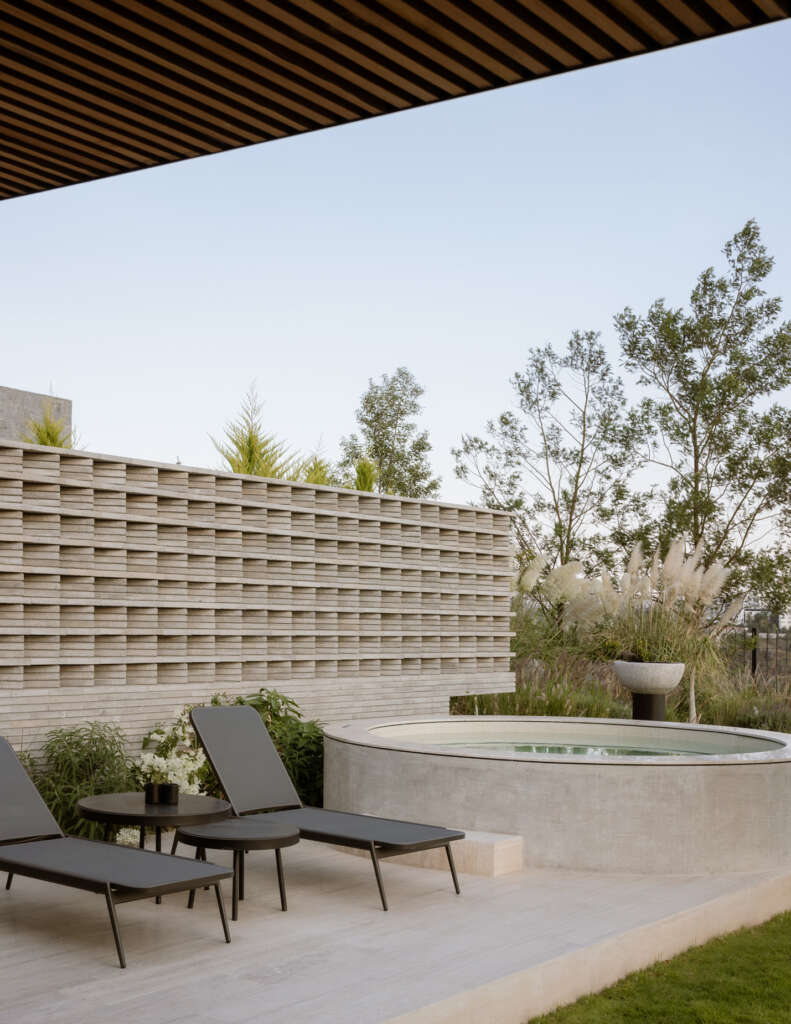
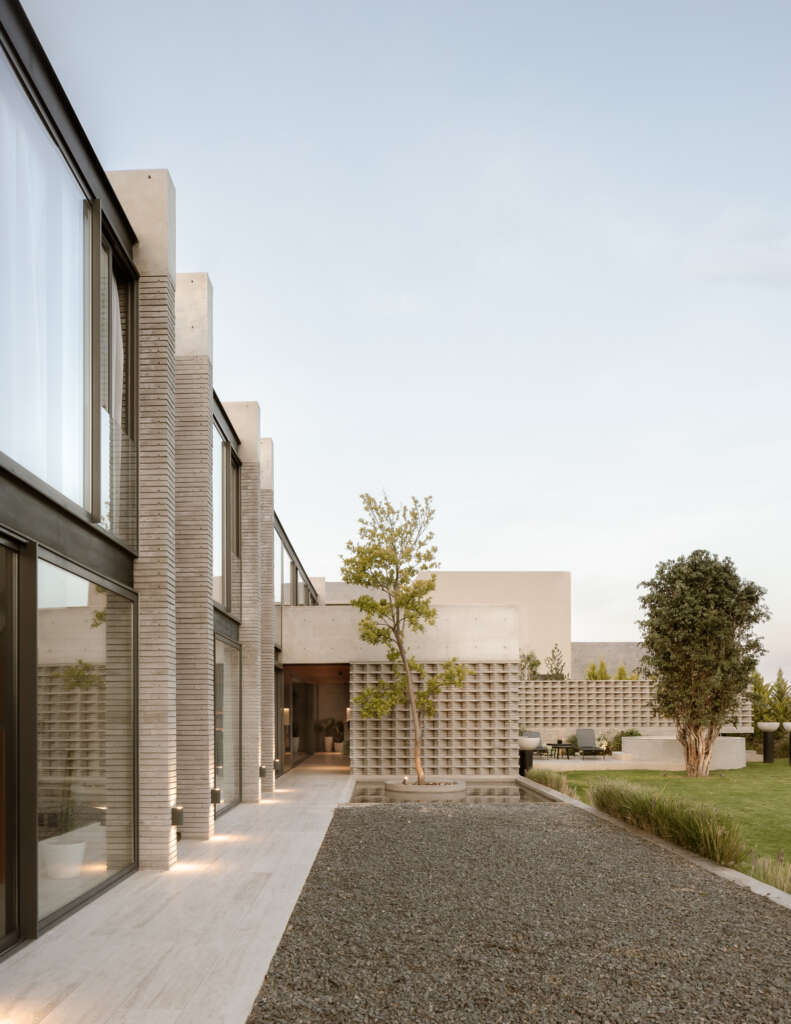
In summary, our proposal seamlessly blends economic efficiency with structural and material integrity, resulting in a sustainable and efficient architectural solution where the interplay of block, concrete and wood achieves a harmonious balance between form and function.
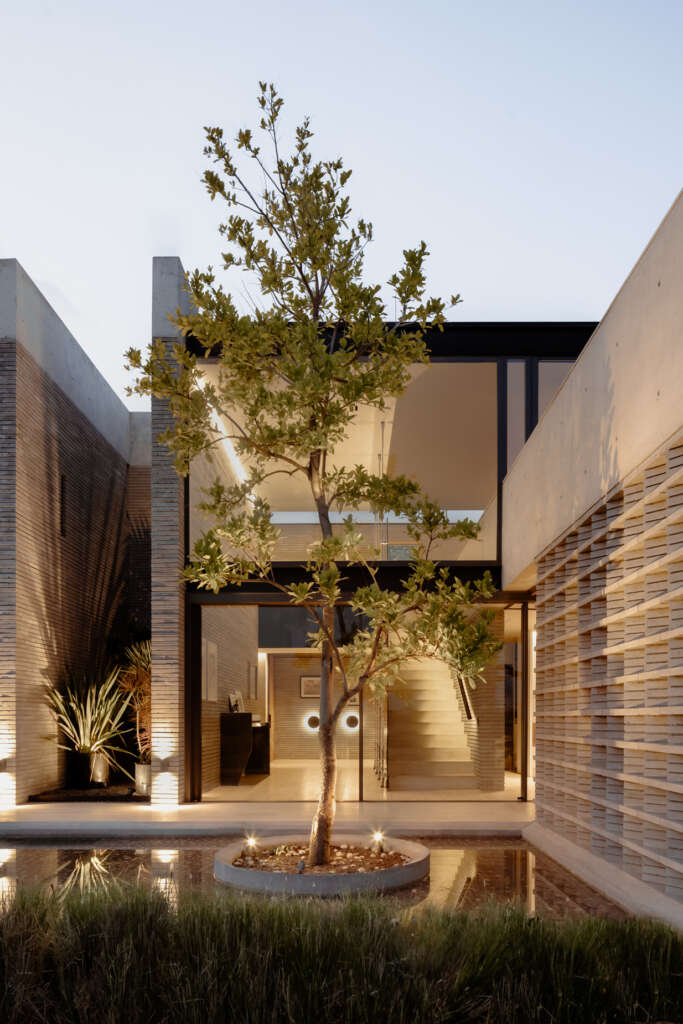
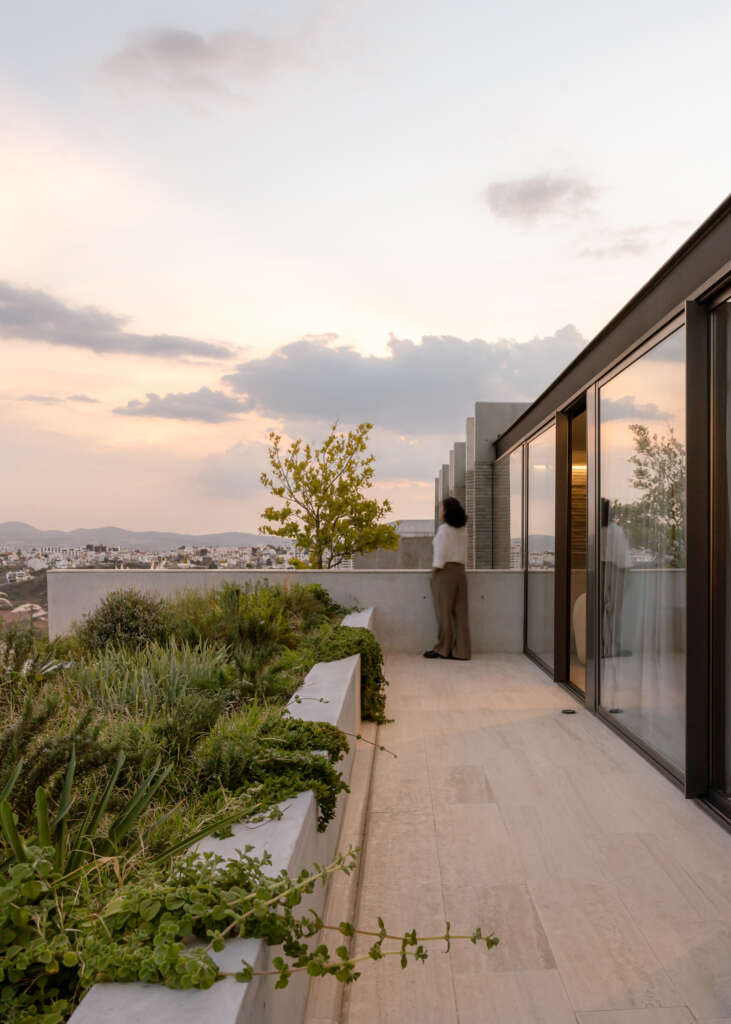
About the Block Design
An outstanding feature of the residence is the meticulous design and development of blocks specifically tailored for this project. These blocks were designed with specific goals in mind: to be easy to use, aesthetically pleasing, and capable of serving as primary structural elements without the need for cladding. Inspired by elongated ingots, the blocks were designed with minimal vertical separation to emphasize horizontal lines. A key innovation was the integration of a tongue and groove system to minimize vertical joints. With precise dimensions of 15 cm wide, 30 cm long and 4 cm high, the blocks were designed to complete the module at 5 cm, resulting in an attractive final aesthetic and facilitating structural integrity. Throughout the design process, the blocks were refined, resulting in three variants tailored to specific wall placements: blocks with tongue and groove on both sides, blocks with tongue and groove on one side, and solid blocks for grid structures. The cavities within the blocks allow for the seamless integration of electrical, plumbing and hydraulic systems, further enhancing the efficiency and practicality of the design.
Project Details
- Location: Santiago de Querétaro, Querétaro, Mexico
- Year: 2024
- Built area: 807 sqm
- Architecture: Laboratorio de Arquitectura
- Authors: Juan Carlos Kelly, Paulina Moreno
- Social networks: @laboratoriodearquitectura
- Website: www.labarq.mx
- Photography: Ariadna Polo | @ariadnapolo.foto
- Construction: Rocablocks




